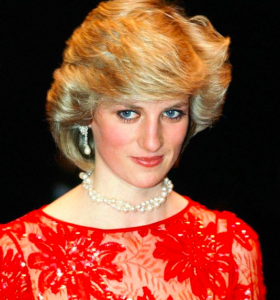It was in 1995, two years before her death, that Princess Diana shared in a TV interview that she would like to be queen. However, she was not referring to the British monarchy that she married into but she wanted to be the queen of people’s hearts.
On the 23rd anniversary this year of her death on Aug 31, 1997, it can be said once again that she has managed to achieve that dream. On Aug 31 every year, people celebrate her life and legacy.
Diana used her status to raise awareness for a number of causes, such as leprosy, domestic violence and mental health. In 1987, Diana was in the news when she shook hands with an Aids patient, working to dispel the myth that HIV/Aids could be spread through touch. Months before her death, she highlighted the dangers of landmines in Angola. According to former Prime Minister Tony Blair, Diana was “the people’s princess”.
Mr Blair used that phrase in a speech after Diana’s death, searching for words to help a nation deal with the sudden loss. In 1996, the princess had finalised her divorce with Prince Charles but the paparazzi still trailed her as she went on holiday with boyfriend Dodi Fayed the following summer. In the wee hours of Aug 31, a car carrying the princess and her boyfriend crashed in a tunnel near the Eiffel Tower in Paris. Diana, Fayed and their driver, Henri Paul, died in the accident.
The royal family was notified while they were away in Scotland at Balmoral Castle. Prince Charles flew to Paris within hours to claim the body before going to Balmoral to be with their sons, Prince William and Prince Harry.
“The immediate reaction of the royal family was to say, ‘We must hunker down and protect the children; there will be formalities that will followed but that’s what we do’,” says author Jonathan Dimbleby in CNN’s Original Series on the royal family, The Windsors.
“Charles’ priority was those boys. He was desperately worried about them,” adds biographer Penny Junor.
Aged 15 and 12 respectively, Prince William and Prince Harry “were at a very tender, difficult sort of age … this was the most shocking and terrible and ghastly thing to happen”.
As the media reported on the fatal crash, the royal family released a short statement that they were “deeply shocked and distressed” by the news.
But “to this grieving population, it seemed like nothing”, recalls historian Kate Williams in The Windsors.
As days passed, with the infamously reserved Brits in open mourning, everyone was looking to Buckingham Palace to make a larger gesture or statement — to make a connection, in the way Diana had always been able to do.

“People felt so emotional about Diana because she had an extraordinary connection with everybody,” says Anji Hunter, Mr Blair’s former adviser, in the CNN series. “People felt a kinship with her; it was like your own beloved friend, mother, sister had died.”
The Queen and the palace were being far too silent, based on the public’s perspective.
“I think the public were waiting for the Queen to lead the morning,” says Junor. “And she didn’t.”
Mr Blair was only four months into the job and, in his autobiography, he remembers of the grief and anger from the public.
The palace’s response “was all very by the book but it took no account of the fact that people couldn’t give a damn about the book”, he wrote, according to the BBC. Mr Blair said his role was “to protect the monarchy, channel the anger before it became rage, and generally have the whole business emerge in a positive and unifying way rather than be a source of tension, division and bitterness”.
Mr Blair jotted down notes for his now famous address on the back of an envelope, with guidance from his communications lead Alastair Campbell.
Once Mr Blair reached the microphone, he shared the emotion the public was searching for. “I feel like everyone else in this country today, utterly devastated,” he said of Diana’s death. “She was a wonderful, and a warm, human being. Though her own life was often sadly touched by tragedy, she touched the lives of so many others, in Britain (and) throughout the world, with joy and with comfort … She was the people’s princess, and that’s how she will stay, how she will remain in our hearts and in our memories, forever.”
Reflecting on the phrase “the people’s princess” in his book, Mr Blair said it “seems like something from another age, corny and over the top”.
Yet it is hard to argue with how well it captured Diana’s legacy, particularly in that moment, journalist Richard Kay says in The Windsors.
“He coined this wonderful phrase about the people’s princess and it struck a chord,” says Kay. “It seemed to sum up the feelings of a country in a paralysis of grief and shock in a way that the Queen did not do.”
Prior to Diana’s funeral, the Queen did respond to the public that was demanding that the royal family somehow show that they cared.
On live TV, she addressed her subjects as a “Queen and as a grandmother”, remarking on Diana as an “exceptional and gifted human being”.
And at the funeral, the Queen took an additional step to pay tribute. “The Queen bows to nobody — ever,” says historian Jane Ridley in the CNN series. And yet, as the funeral procession rode past Buckingham Palace, the Queen was seen out front, “making a bow to her daughter-in-law”. /TISG
